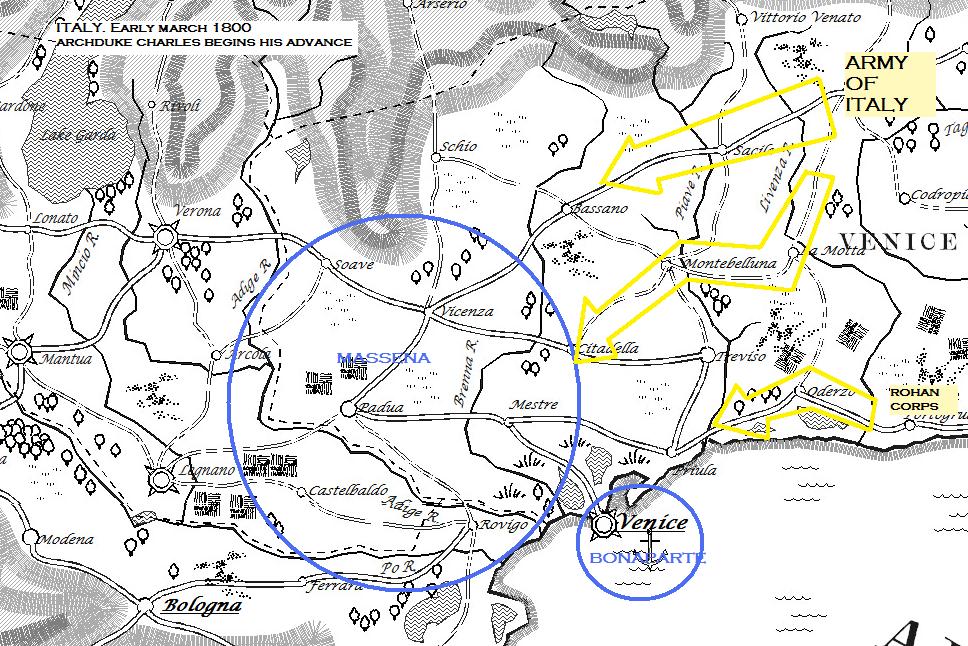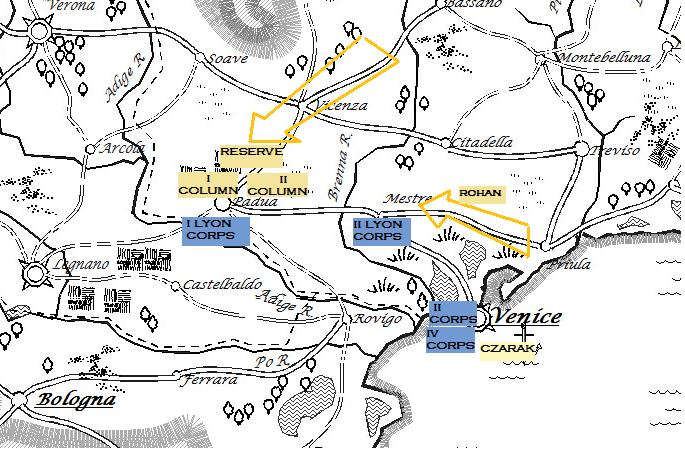
Campaign update
ARMISTICE APPROACHES
March 10-14, 1800
In the final days before the armistice became a certainty, most of the armies were cautious and inactive. Sieges were continued and troops were kept busy with manoeuvres and drill practise.
In Northern Italy though, Archduke Charles had resolved to make another attempt to gain the upper hand in the war. Following the two-day battle of Soave, Charles had retreated his army to Osoppo to gather in replacements and to re-equip his battered army. Meanwhile, rather than pursuing, Bonaparte had settled in to lay siege to Venice while Massena hovered north of Venice, covering Bonaparte's flanks.
Charles' plan involved marching quickly westward, hoping to catch scattered elements of the French separated from Bonaparte at Venice. One column would move down the main road while his cavalry would move down the central minor roads, remaining ever in contact and able to concentrate for battle as needed. Rohan's provisional cavalry corps was sent down the southern road to watch for any French taking that route from Venice.
Each day that Charles advanced, he was surprised to find no French. He had though for certain that they must have reached Sacile by the time he started his counter-attack but they were not there.

Piquets finally encountered French divisions at Vicenza but when the Austrians concentrated for battle there, the French had vanished, marching to Padua. Charles pursued and found them there. Three divisions. At the same time that he attacked Padua, Charles had Rohan skirmishing with enemy forces at Mestre, pinning them to their front.

The French were immobilized though, lethargic perhaps due to the anticipation of armistice. They did not respond to the Austrian attack. Charles had achieved exactly what he had wanted, to catch a portion of the French army isolated and unsupported. Could he get the decisive battle that he needed at Padua?